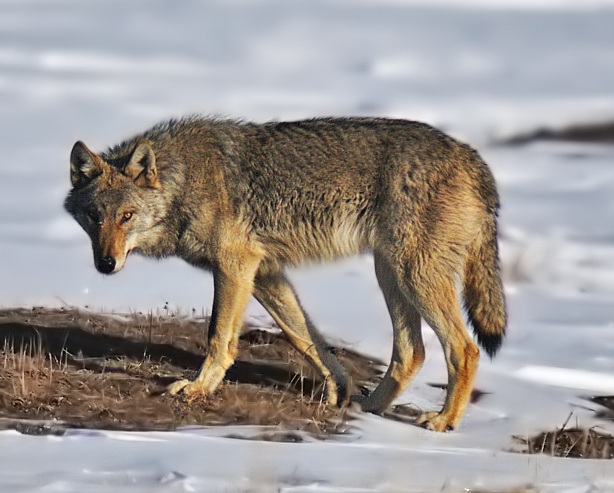
Mexican Wolves in the Wild
The Mexican Wolf Reintroduction Project
Reintroduction of the Mexican gray wolf into the Blue Range Wolf Recovery Area (BRWRA) of Arizona and New Mexico was initiated in March 1998. Mexican wolves released into the BRWRA and their offspring are designated as a nonessential experimental population which allows for greater management flexibility to address wolf conflict situations such as livestock depredations and nuisance behavior. The BRWRA is a defined geographic area that encompasses the entire Apache and Gila national forests and is divided into primary and secondary recovery zones. “Initial releases” (release of wolves born and raised in captivity) can only occur in Arizona in the primary recovery zone in Greenlee County. “Translocations” of experienced animals (previously released wolves or wolves born in the wild) can occur in either the primary or secondary recovery zones. Wolves are not allowed to establish territories on public lands wholly outside the BRWRA boundary and must be retrieved.
The Blue Range Mexican Wolf reintroduction project is managed by the U.S. Fish and Wildlife Service in collaboration with the following cooperating agencies: Arizona Game and Fish Department, USDA Forest Service, USDA-APHIS Wildlife Services, and the White Mountain Apache Tribe. These agencies, along with the Arizona Counties of Graham, Greenlee, and Navajo, work together under a formalMemorandum of Understanding which provides a framework for collaboration that is based in sound science and which enables the signatories to develop a mutually-agreeable, long-term collaboration in reintroduction of Mexican wolves in Arizona and New Mexico within the Mexican Wolf Experimental Population Area as defined in the 1998 Final Rule governing reintroduction.
Reintroduction of a top predator such as the Mexican wolf is highly complex and often controversial. It is important to understand the role Mexican wolves are playing on the landscape, including all of the potential biological, social and economic impacts – be they good, bad, or indifferent. In order to continually evaluate this role, an Interagency Field Team (IFT) has been formed and has the primary responsibilities of collecting data, monitoring, and managing the free-ranging Mexican wolf population. Equally important is the IFT’s close interaction and involvement with local communities directly affected by wolf recovery. Additional information about the Blue Range Reintroduction Project can be found on Arizona Game and Fish Department’s web page at: http://azgfd.gov/wolf.
